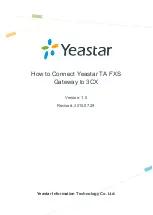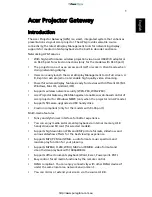
defined in the relevant RFC and in the Internet draft.
BRRP terms
Field
Description
VRRP router
“A router that uses the Virtual Router Redundancy Protocol. It
can be integrated into one or more “virtual routers”.”
Virtual Router
“An abstract object controlled by the VRRP, which is used as
default router for the hosts of a LAN. It comprises a Virtual
Router Identifier (Virtual Router ID) and an IP address or a
group of associated IP addresses in a common LAN. A VRRP
router can protect the data traffic of one or more virtual routers.”
IP Address Owner
“The VRRP router that possesses the IP address(es) of the vir-
tual router as real interface address(es). This is the router that –
if active - answers packets for ICMP pings, TCP connections,
etc. to one of these IP addresses.”
Primary IP Address
“An IP address that is selected from the group of real interface
addresses. A possible algorithm option is the selection of the
first address. VRRP advertisements are always sent with the
primary IP address as source of the IP packet.”
VRRP Advertisement
A keepalive that sends the master to the backup gateway to in-
dicate his reachability.
Virtual Router Master
“The VRRP router that takes over forwarding the packets that
have been sent to the IP addresses associated with the “virtual
router”. It is also responsible for answering ARP (Address Res-
olution Protocol) requests for these IP addresses."
Virtual Router Backup
“The group of VRRP routers that take over responsibility for for-
warding the packets if the master fails.” In backup status these
VRRP routers are inactive, i.e. they do not respond to any ARP
requests."
18.13.1 Virtual Routers
When using a route redundancy protocol, multiple routers are combined into a logical unit.
The router redundancy protocol BRRP manages the routes involved and organises these
as follows:
It ensures that only one routers within the logical connection is active.
bintec elmeg GmbH
18 Local Services
bintec RS Series
467
















































